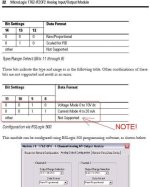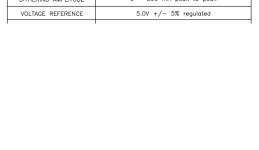Hi Jspann7,
The way I read it is that the valve is setup for 0-12V proportional control via PWM.
The Amplifier (PWM-1400-12) can take in a supply from 9 to 32V (Normal range for mobile applications) and will output the correct voltage for the valve. Therefore, it is probably OK to connect the PLC card and amplifier card to the same 24VDC supply. As also mentioned, the proportional valve coil should only be connected across the 6 and 7 terminals of the amplifier, and must not be directly connected to either the positive or negative (0VDC) terminal of the DC power supply.
Finally, I would check this with whoever sold you the unit.
As for the PLC output, it is programmable to give you 0-20mA. You can put out 21mA from it, and a small number of devices can use this extra current to compensate for devices built with wide tolerances.
Hope this helps,
Doug
The way I read it is that the valve is setup for 0-12V proportional control via PWM.
The Amplifier (PWM-1400-12) can take in a supply from 9 to 32V (Normal range for mobile applications) and will output the correct voltage for the valve. Therefore, it is probably OK to connect the PLC card and amplifier card to the same 24VDC supply. As also mentioned, the proportional valve coil should only be connected across the 6 and 7 terminals of the amplifier, and must not be directly connected to either the positive or negative (0VDC) terminal of the DC power supply.
Finally, I would check this with whoever sold you the unit.
As for the PLC output, it is programmable to give you 0-20mA. You can put out 21mA from it, and a small number of devices can use this extra current to compensate for devices built with wide tolerances.
Hope this helps,
Doug





